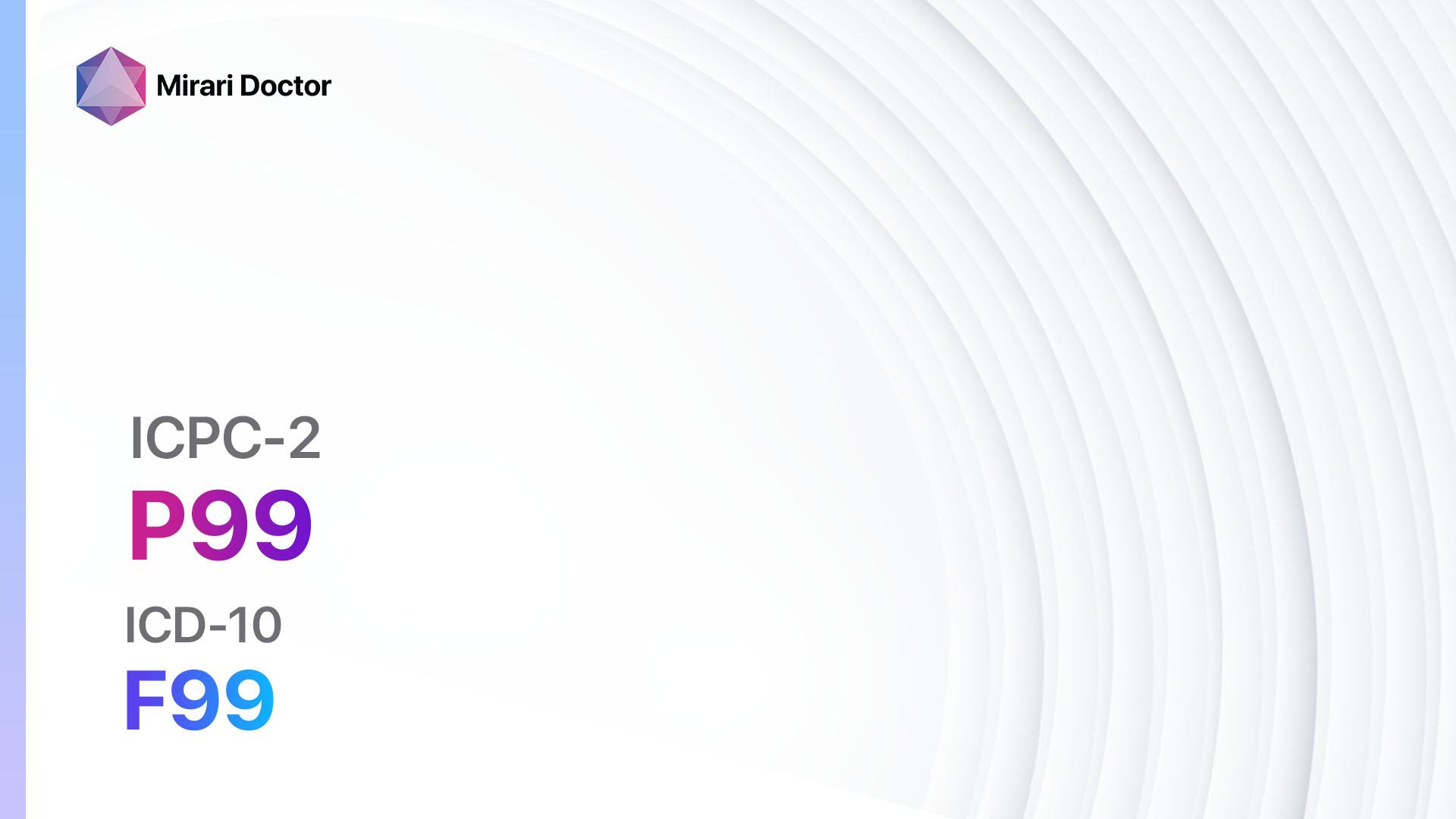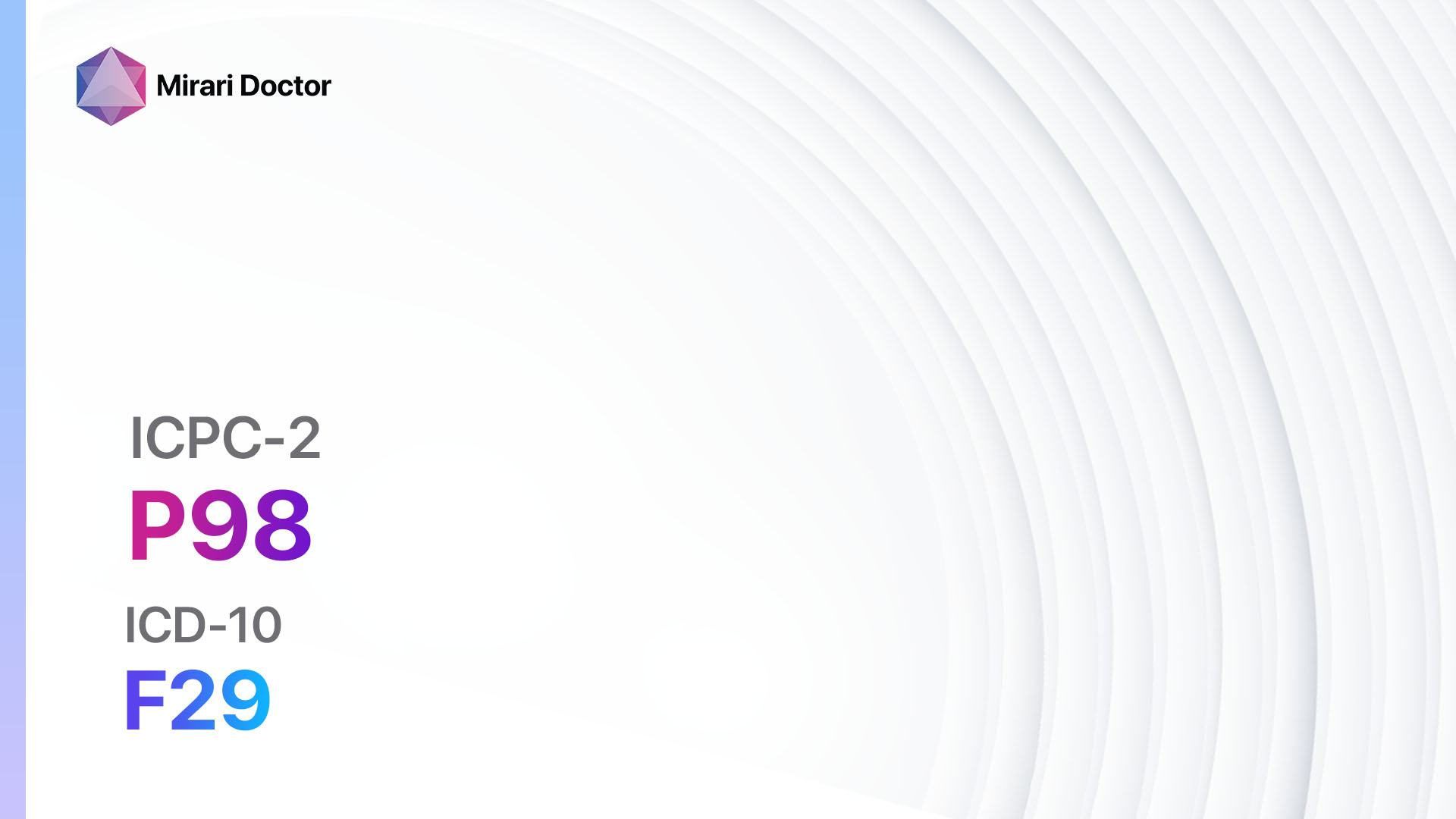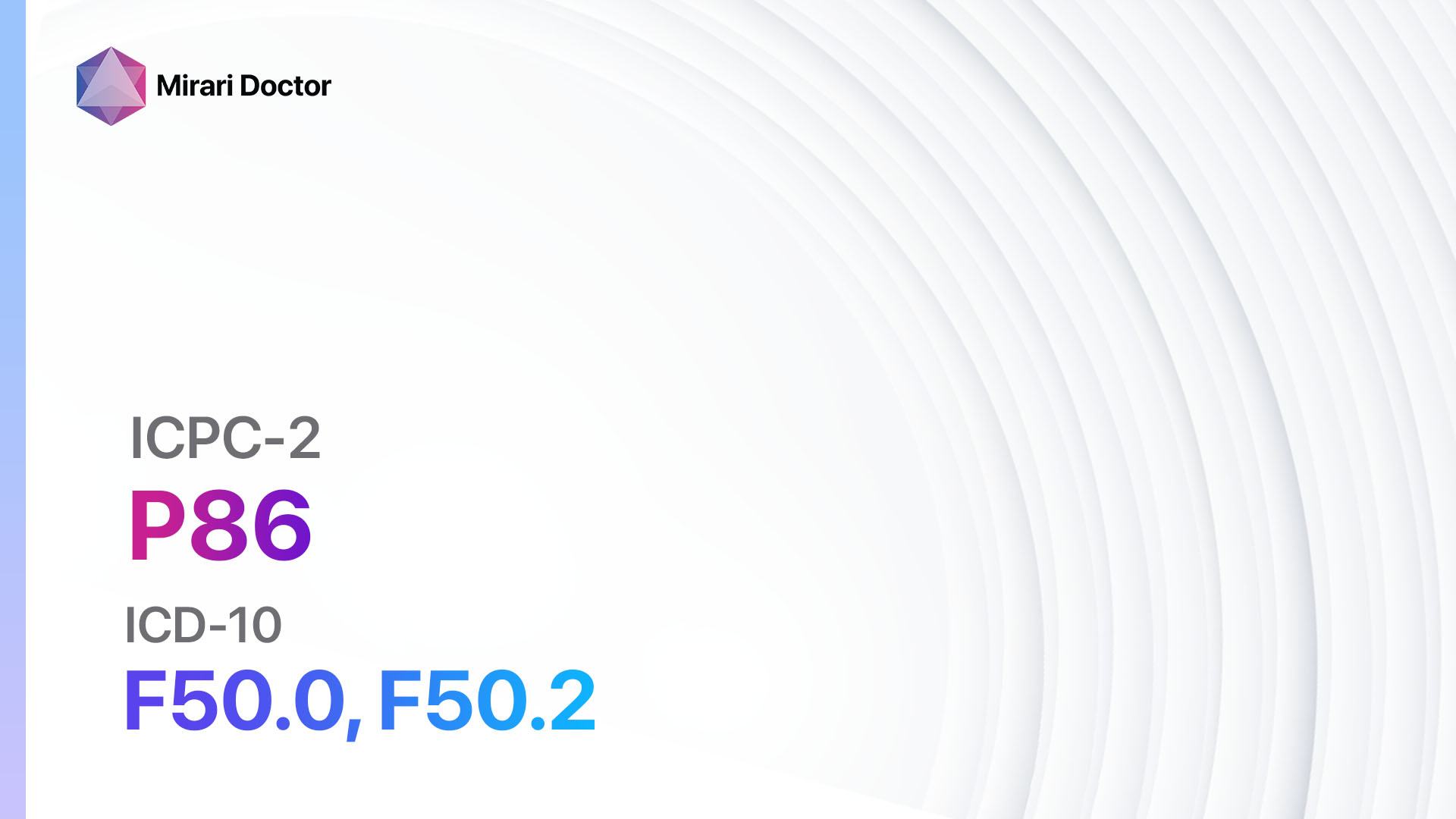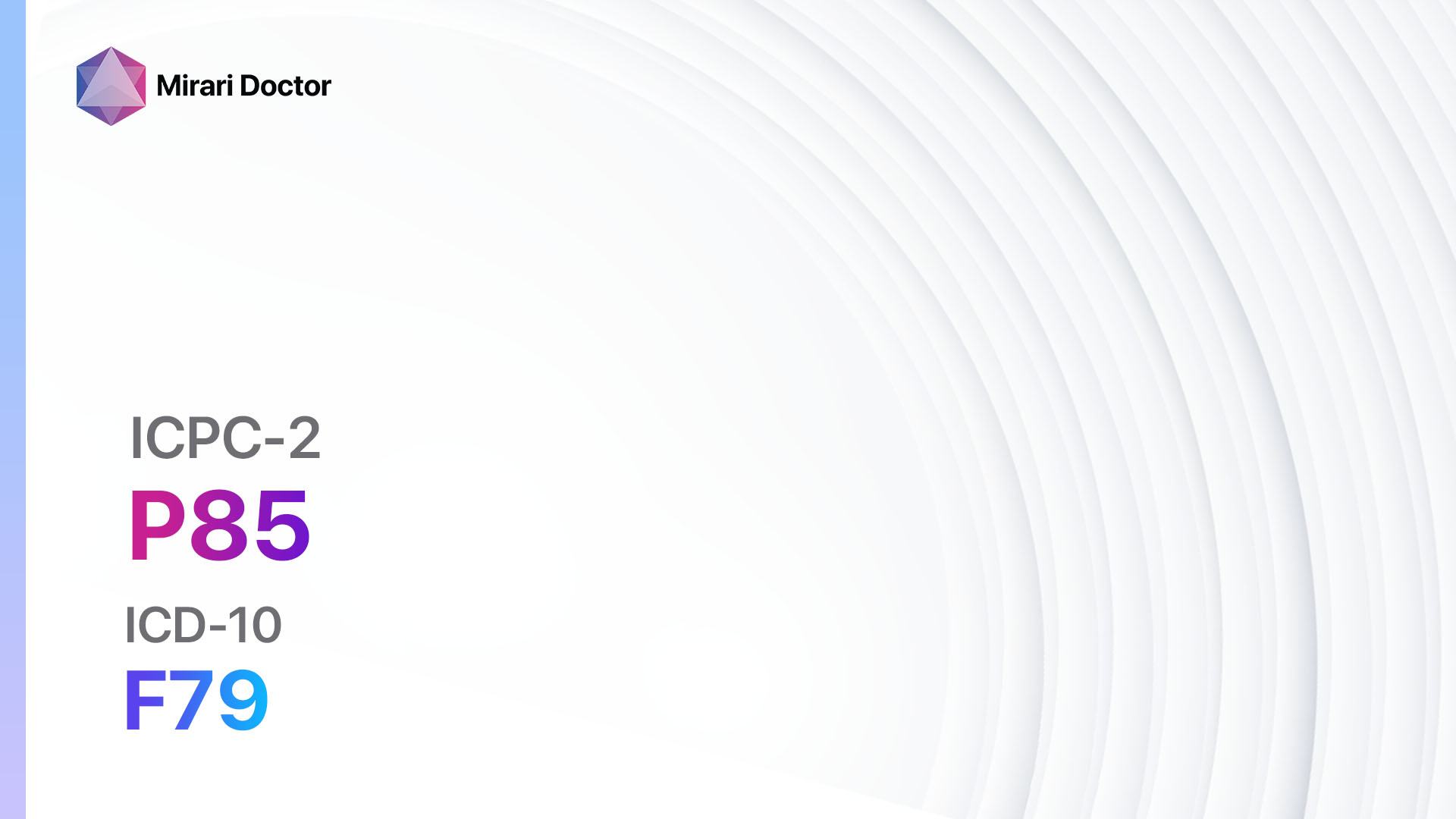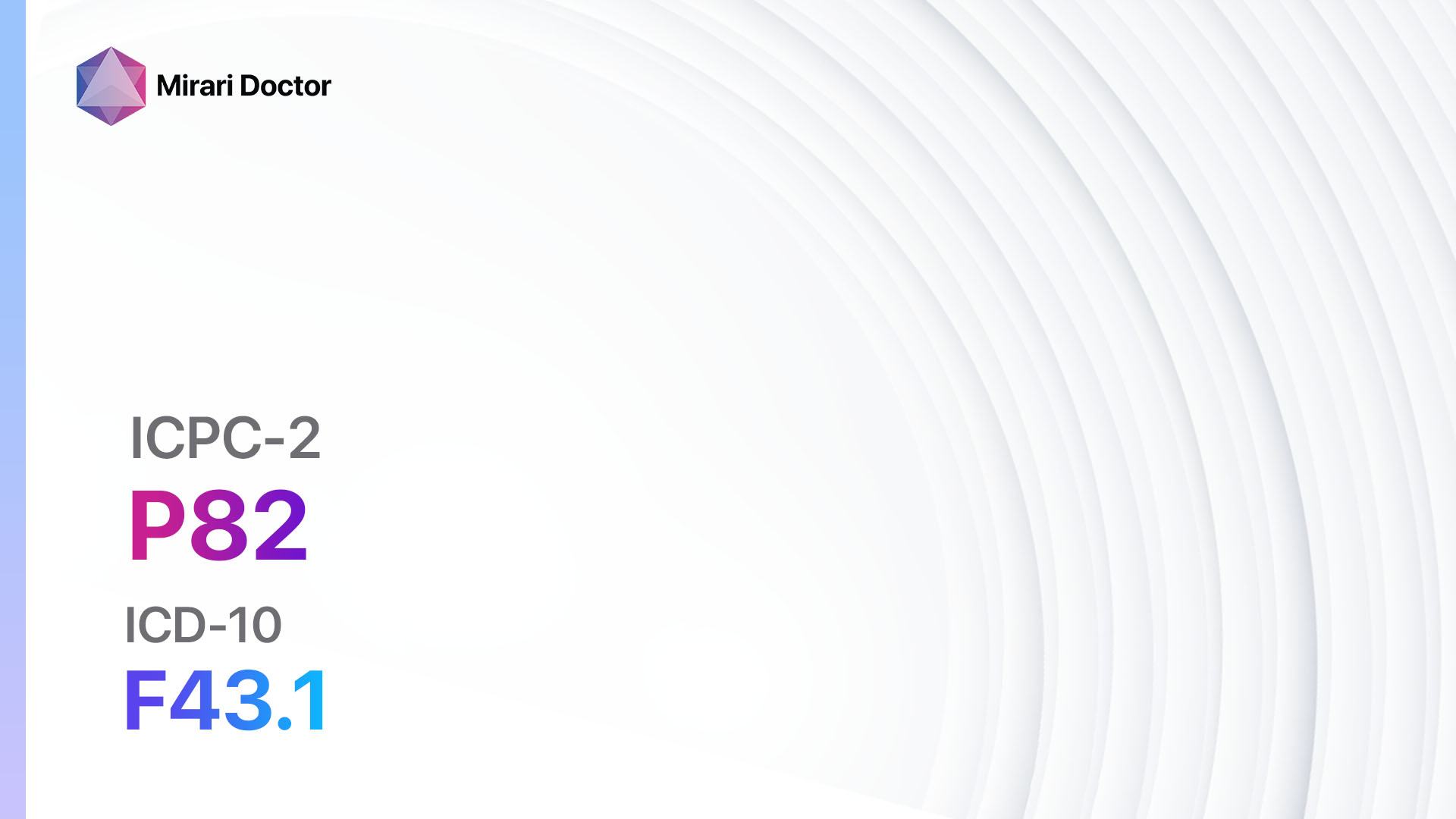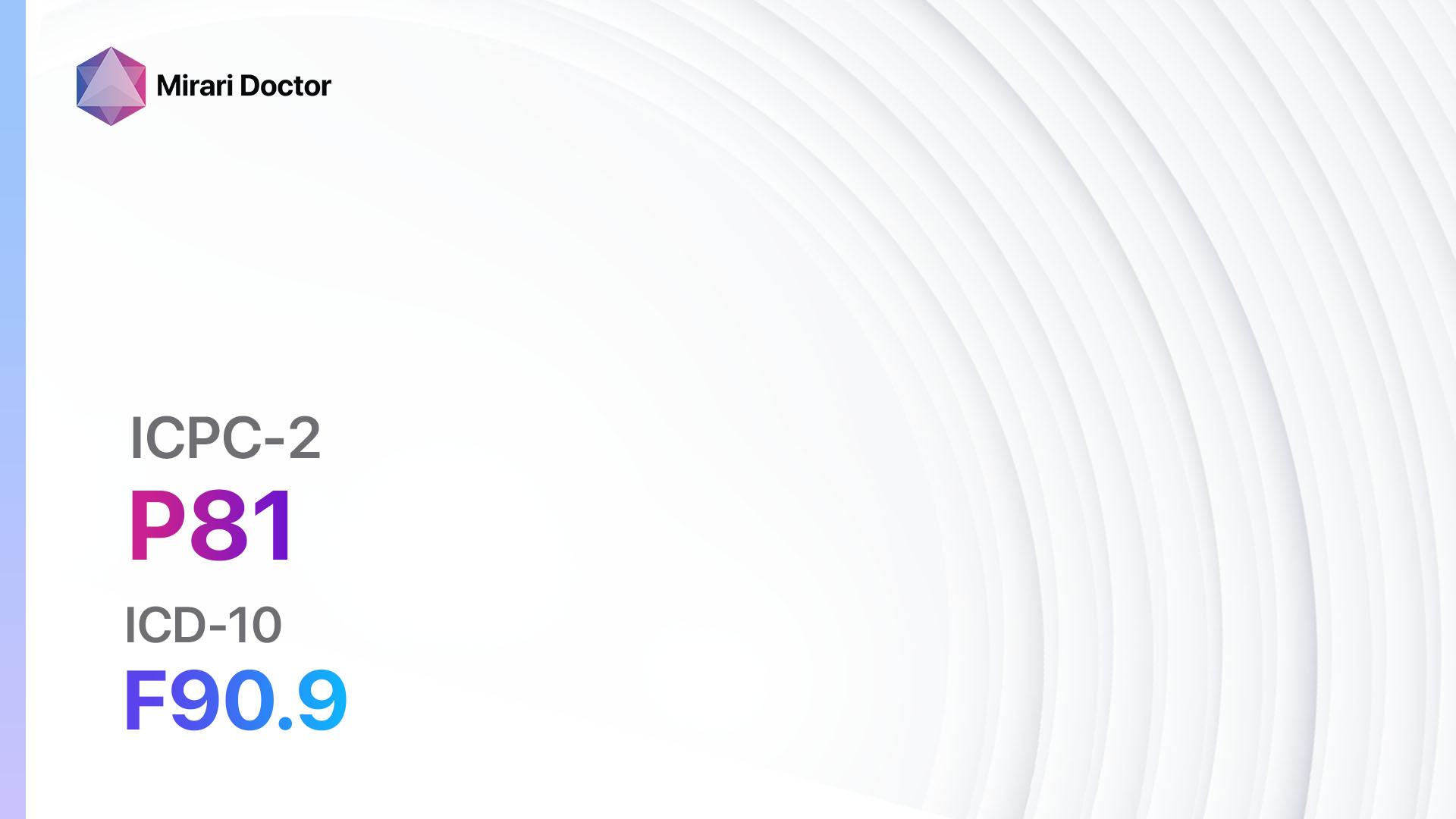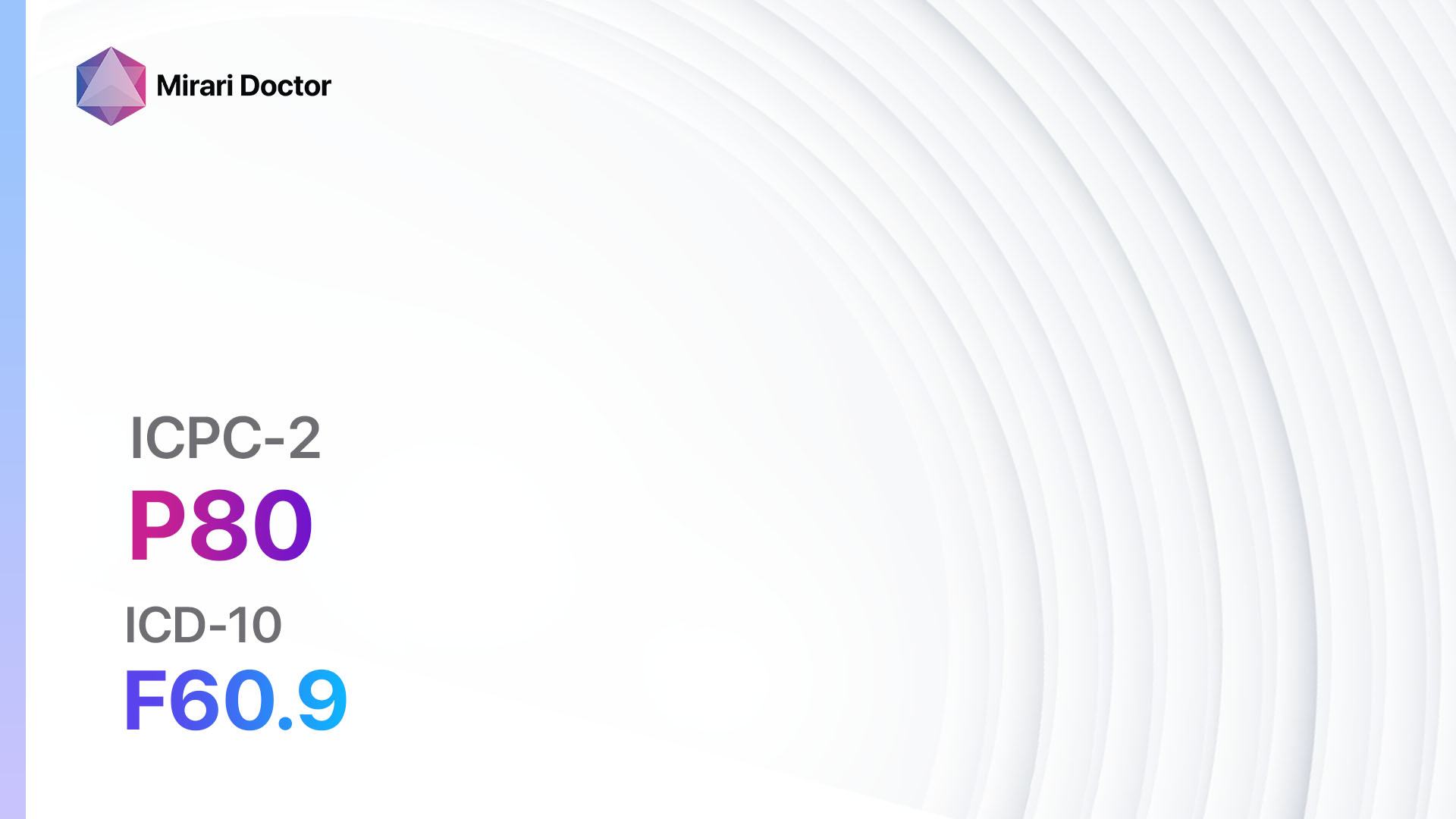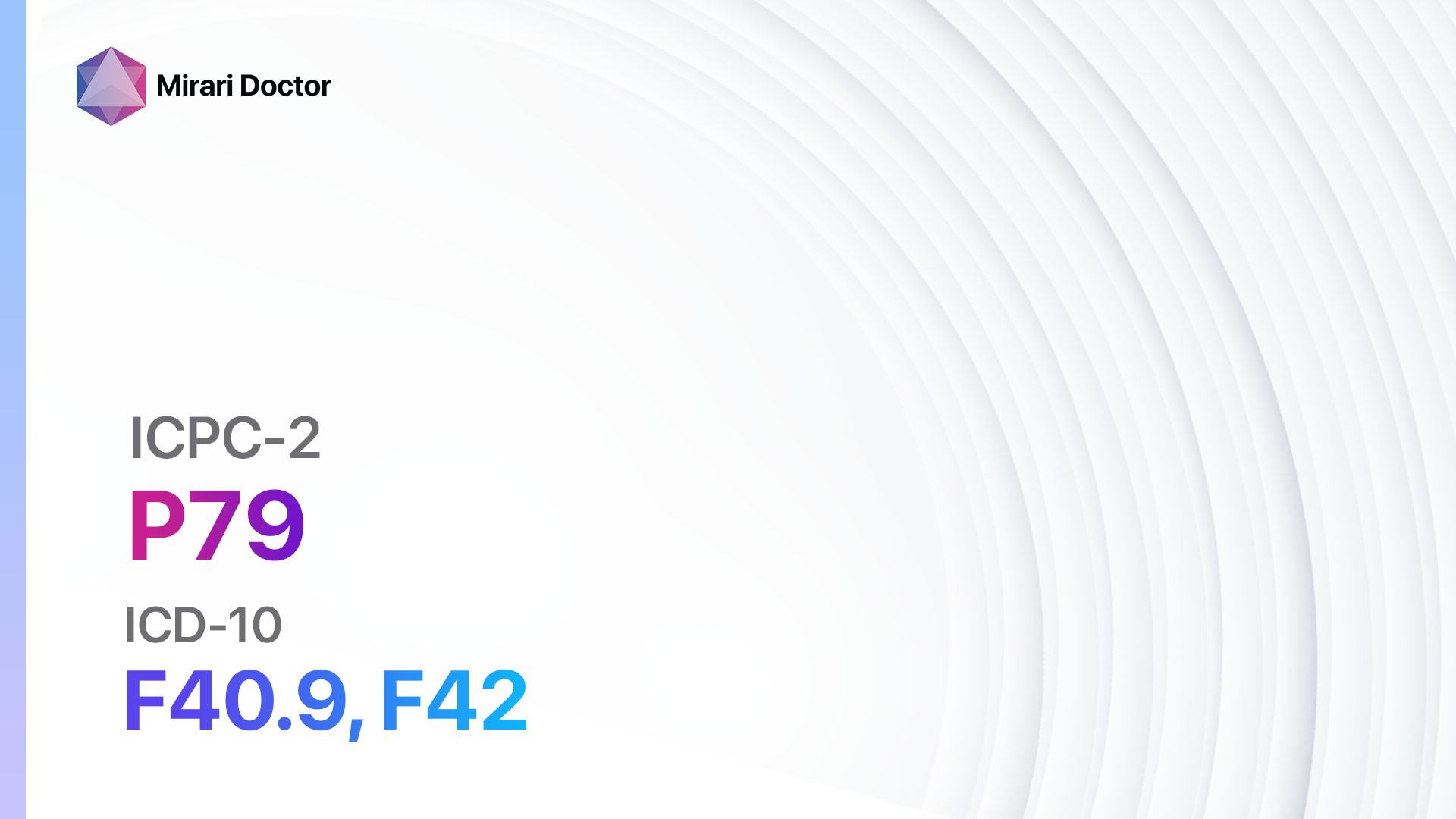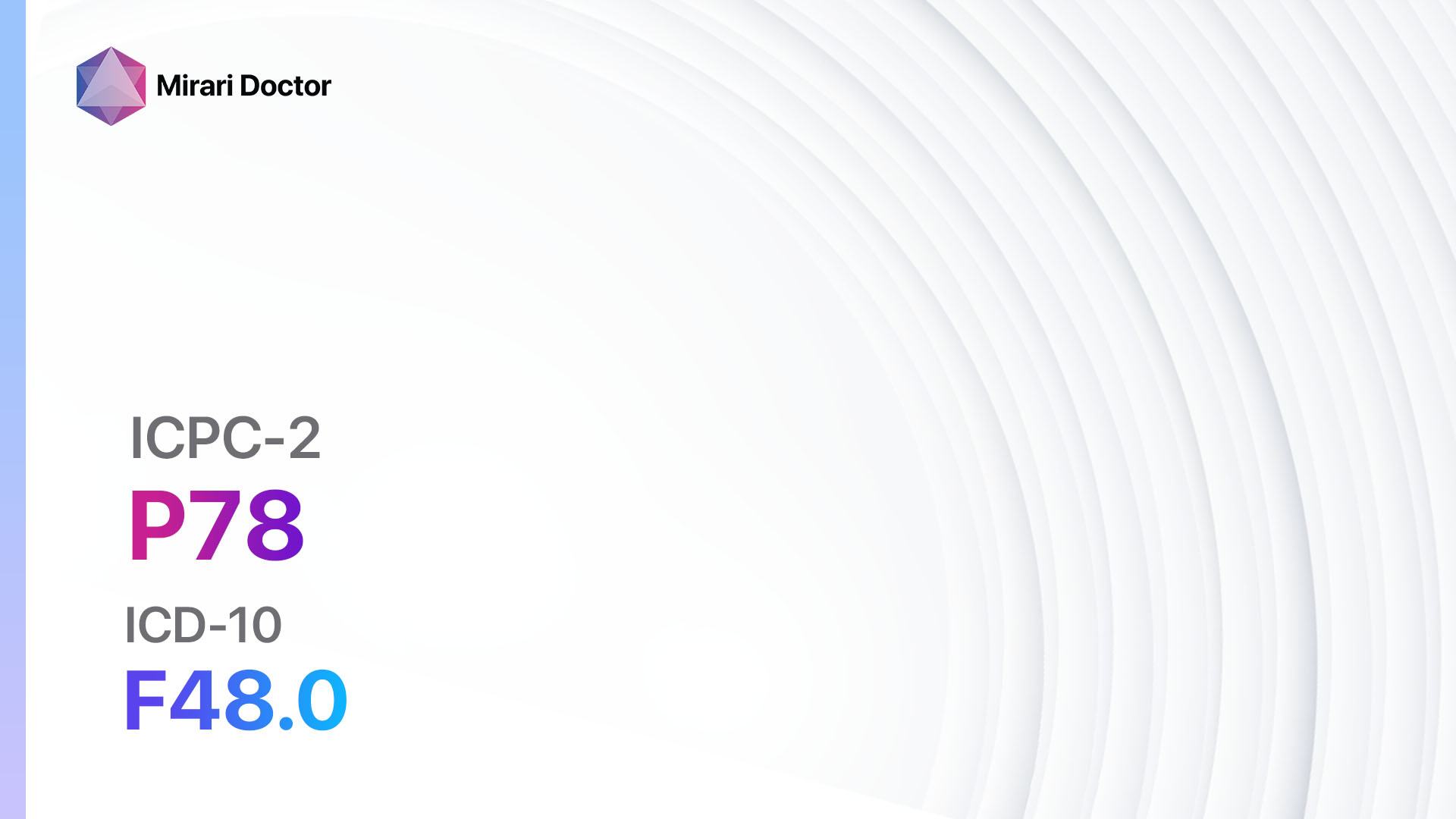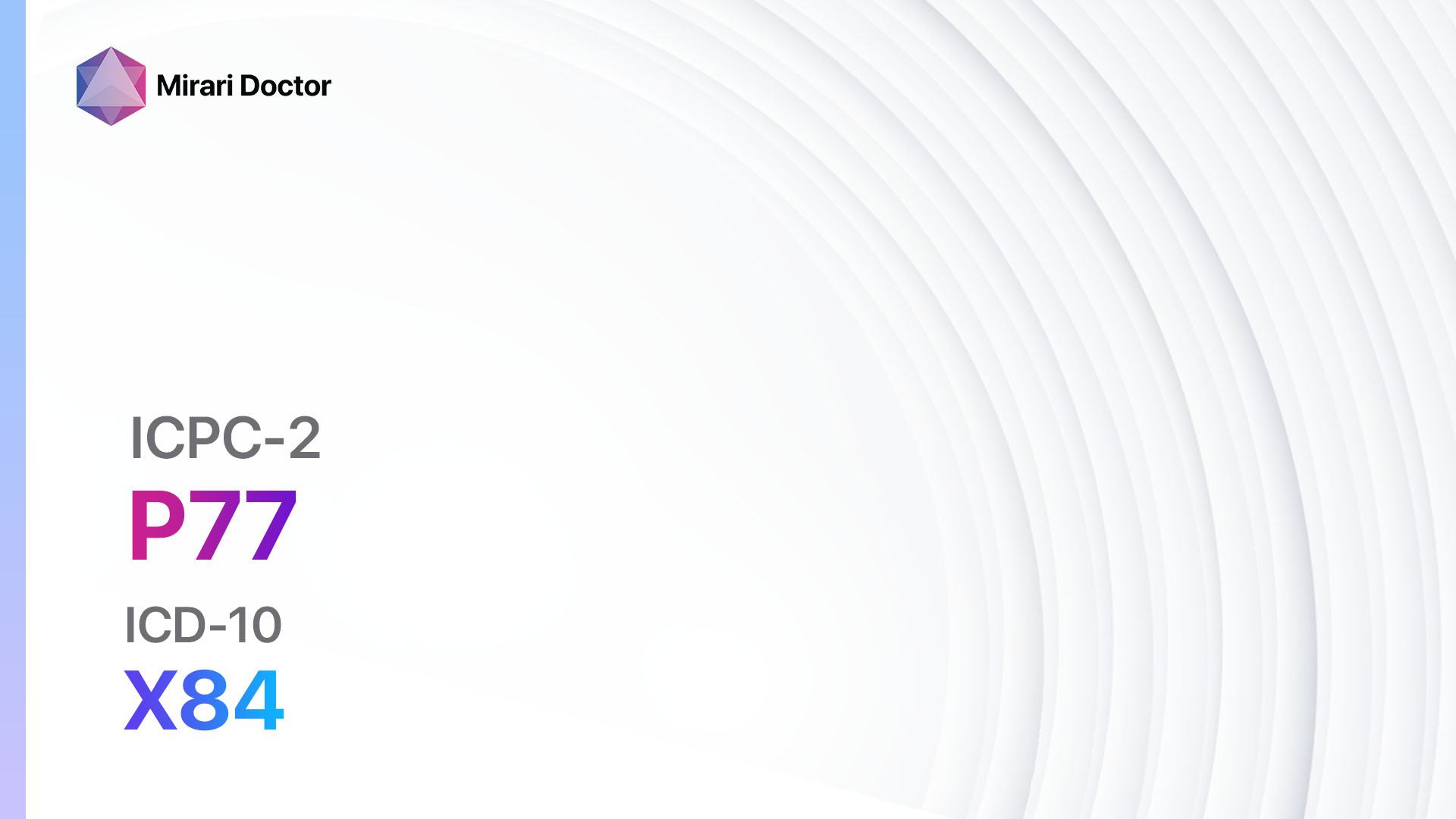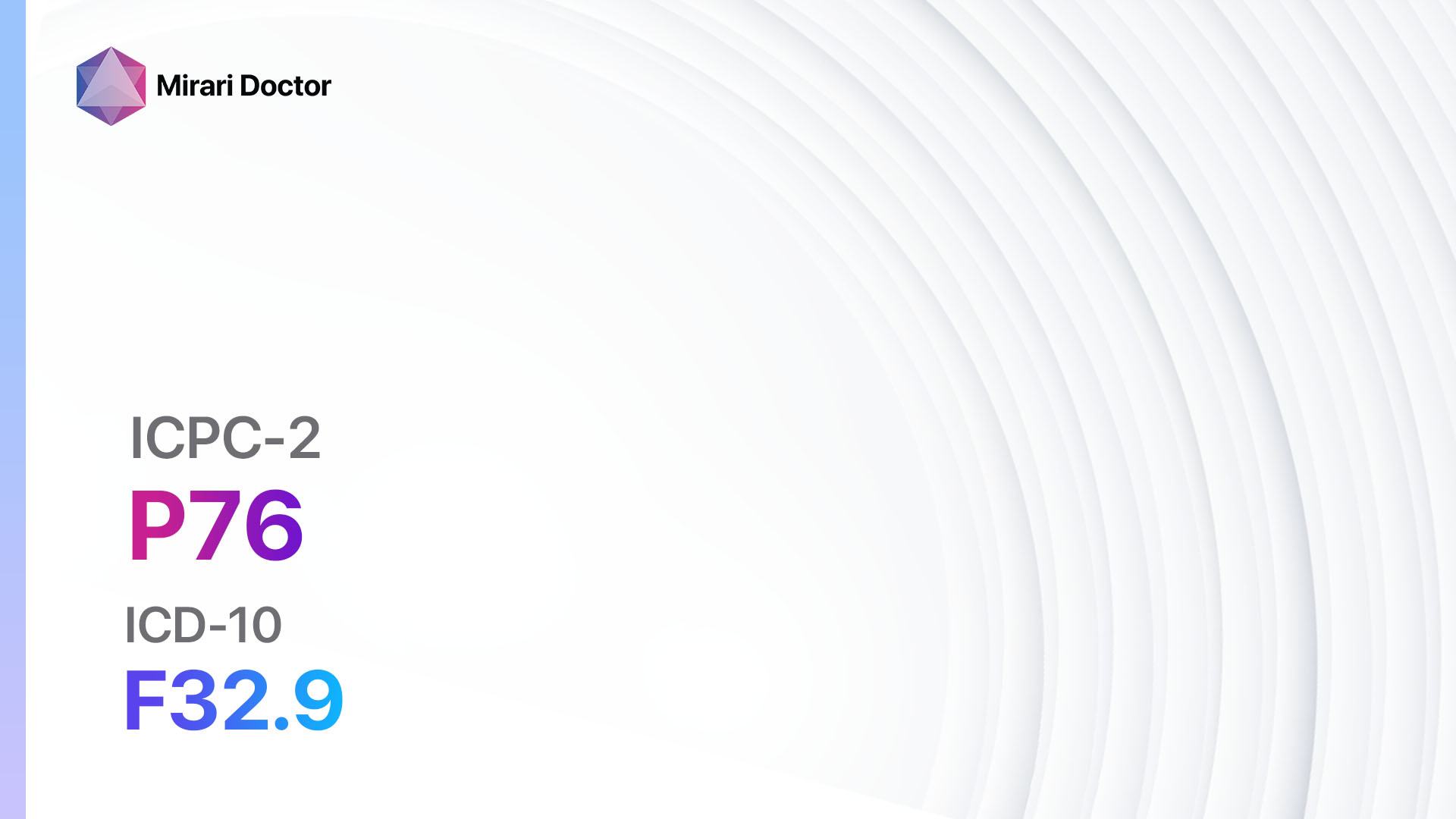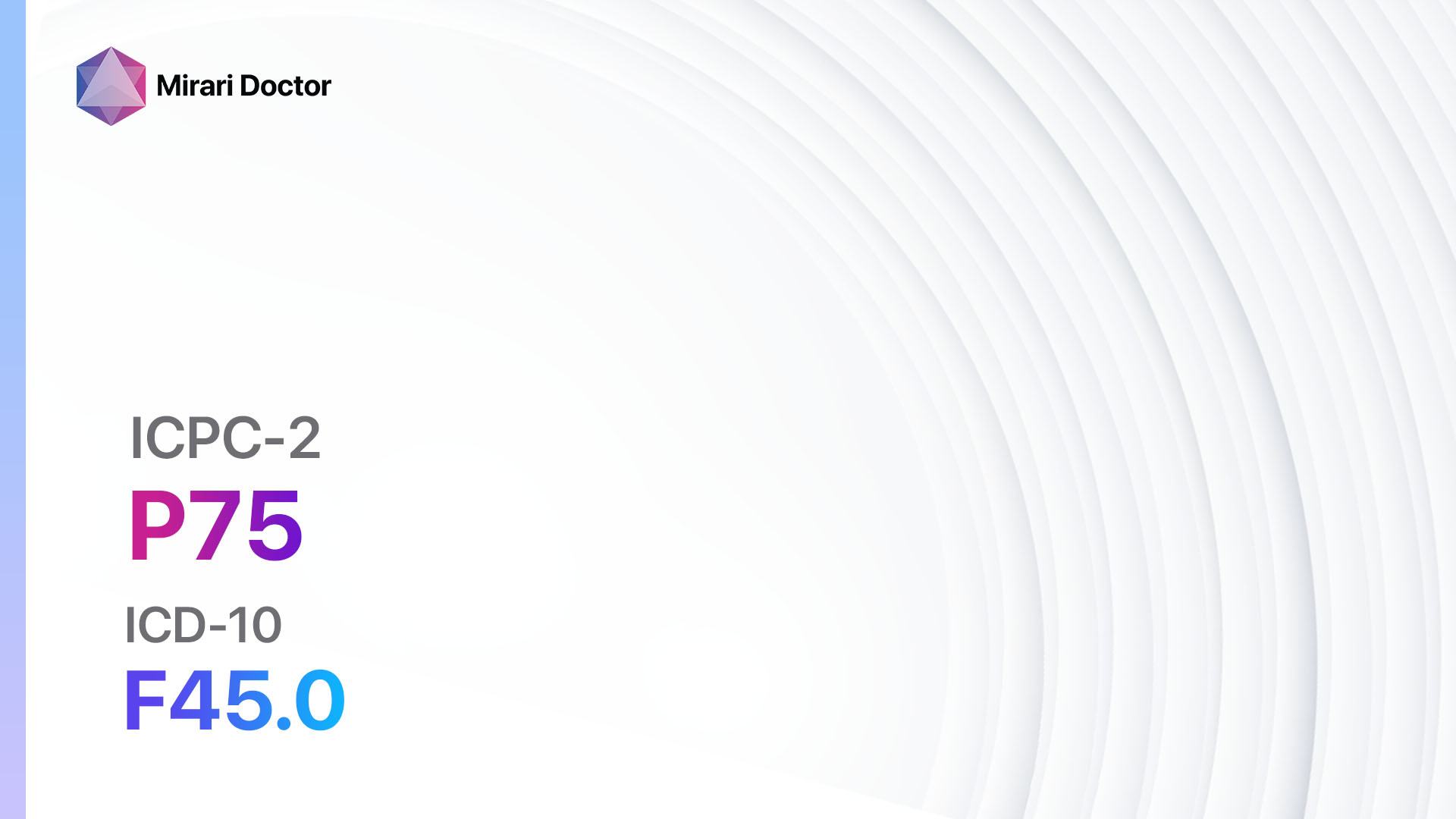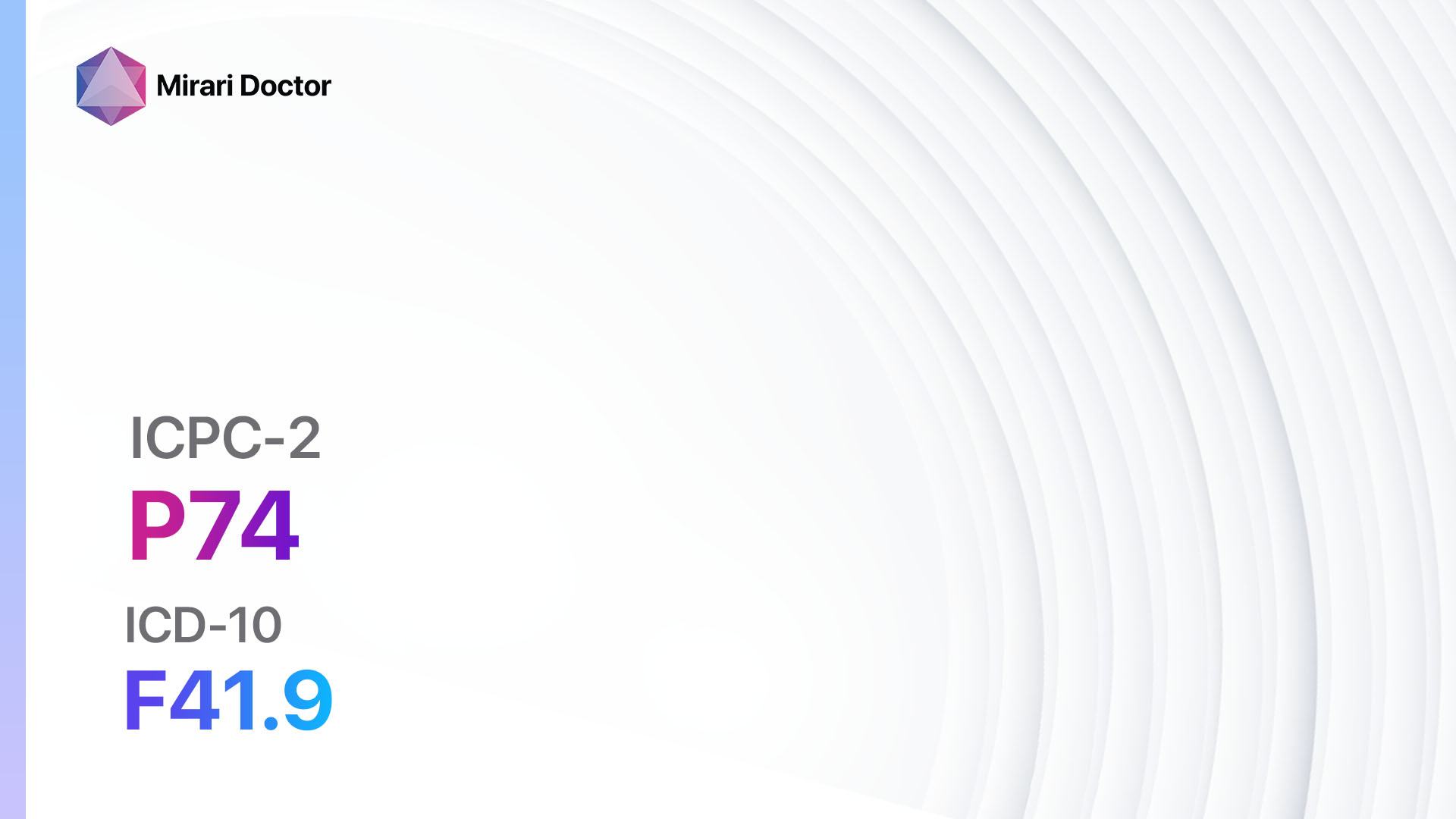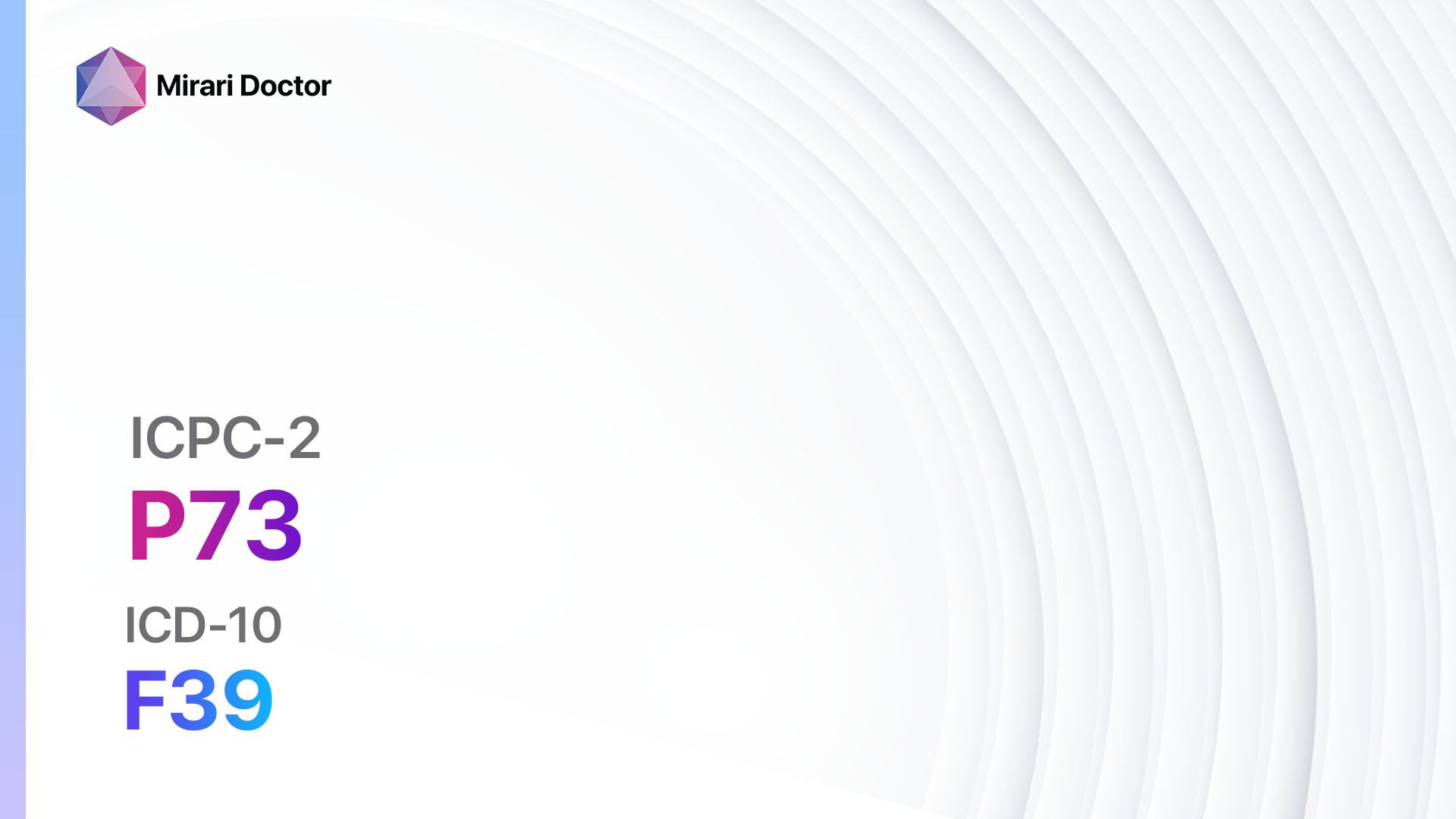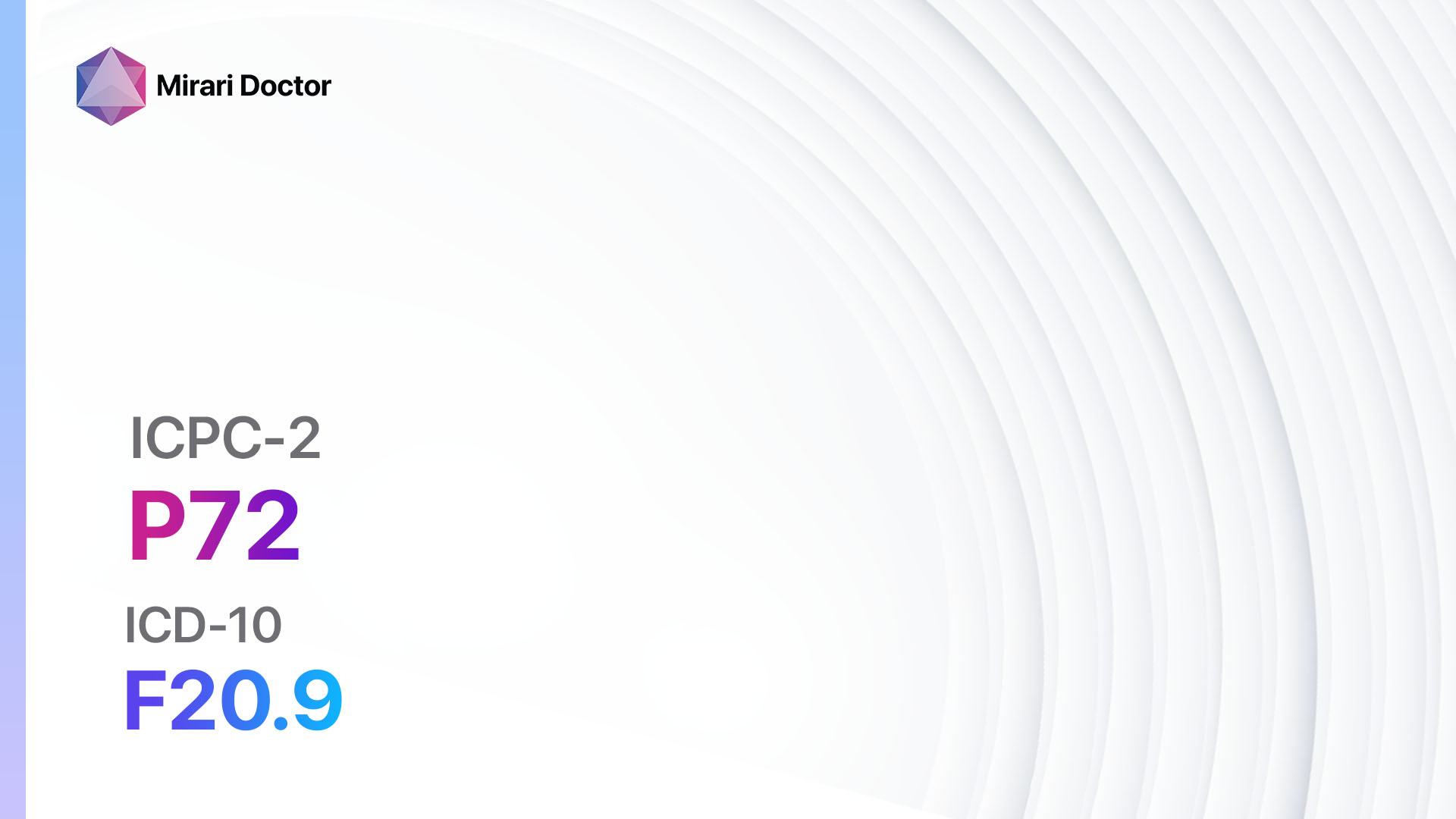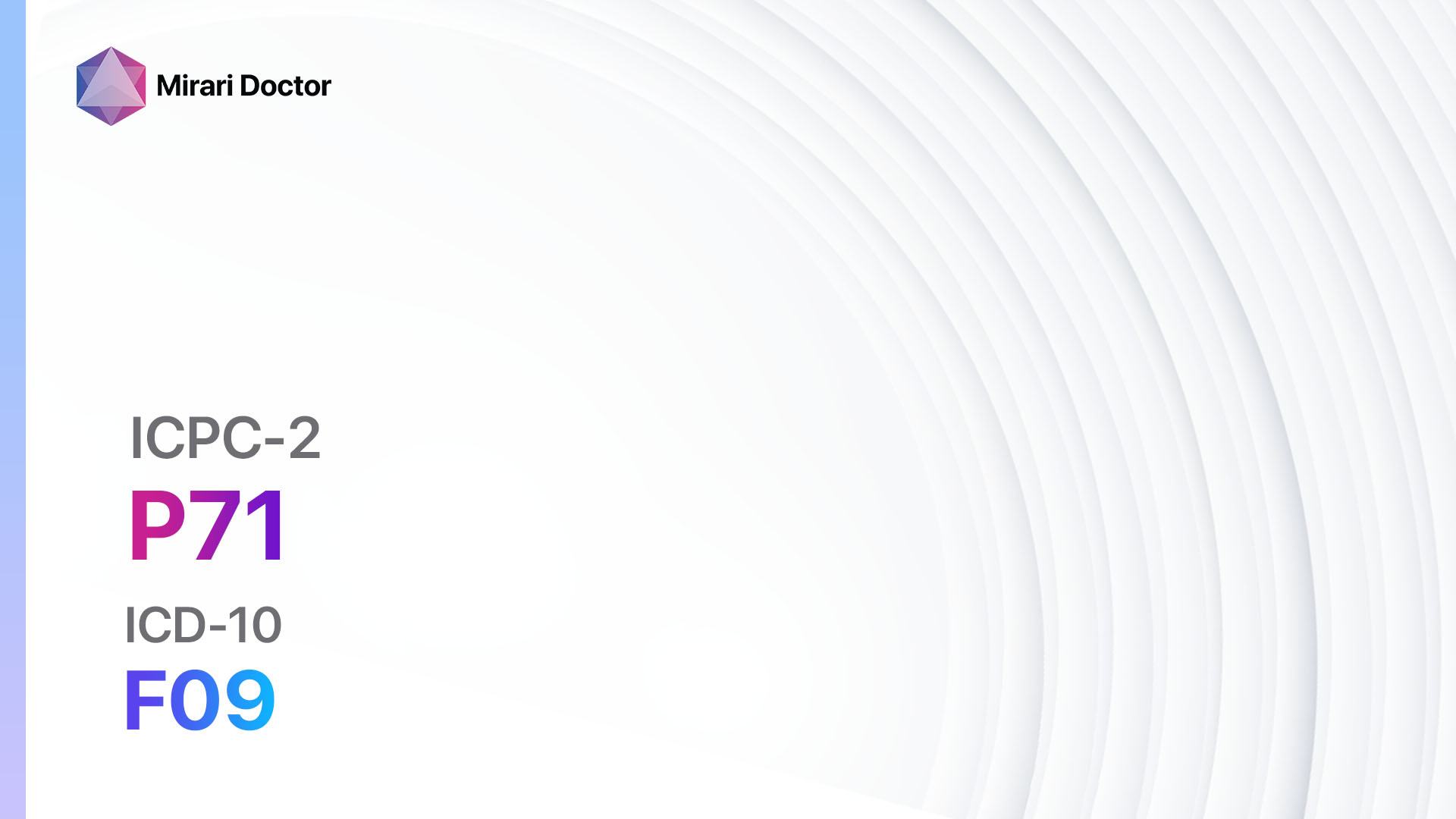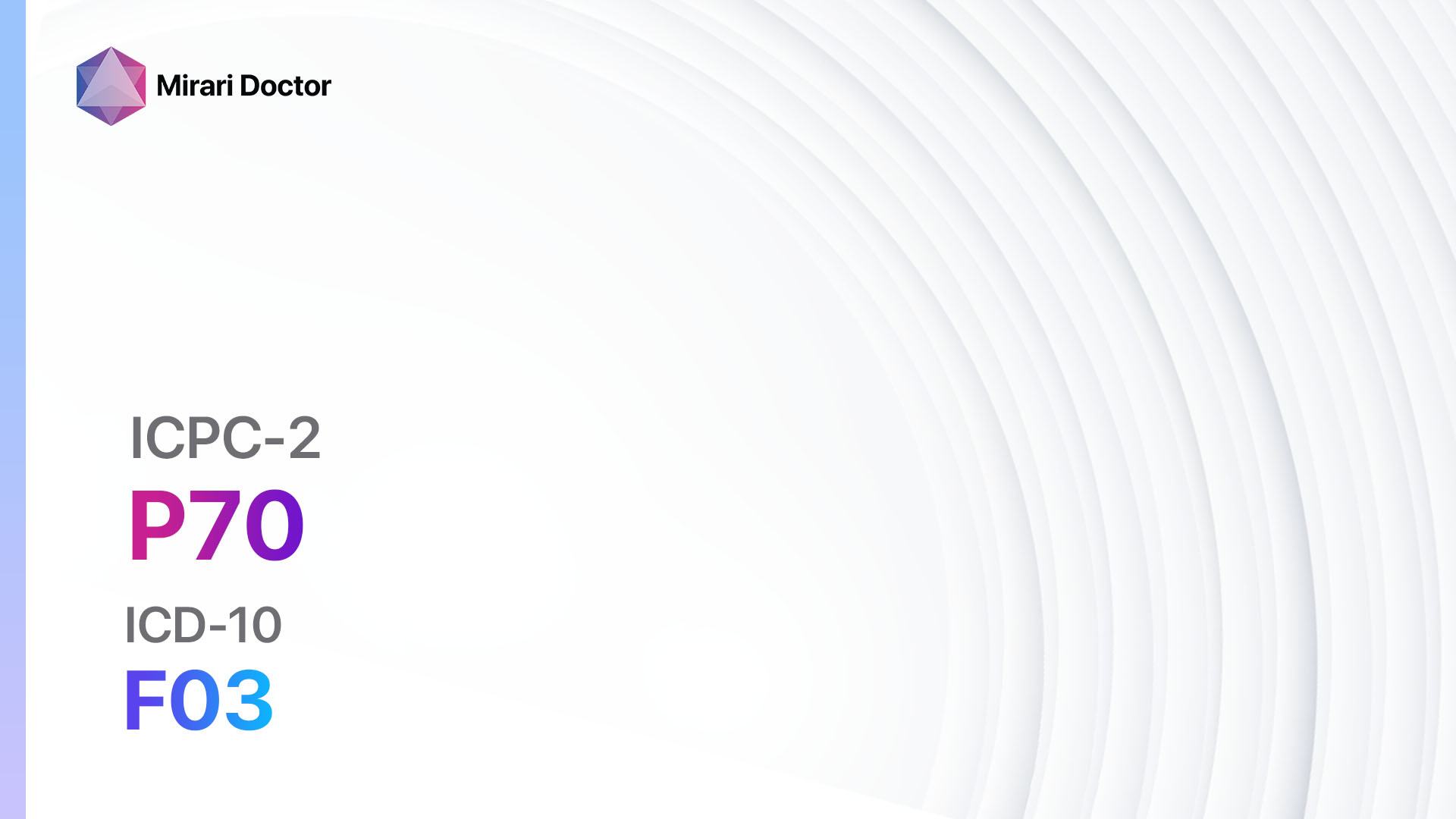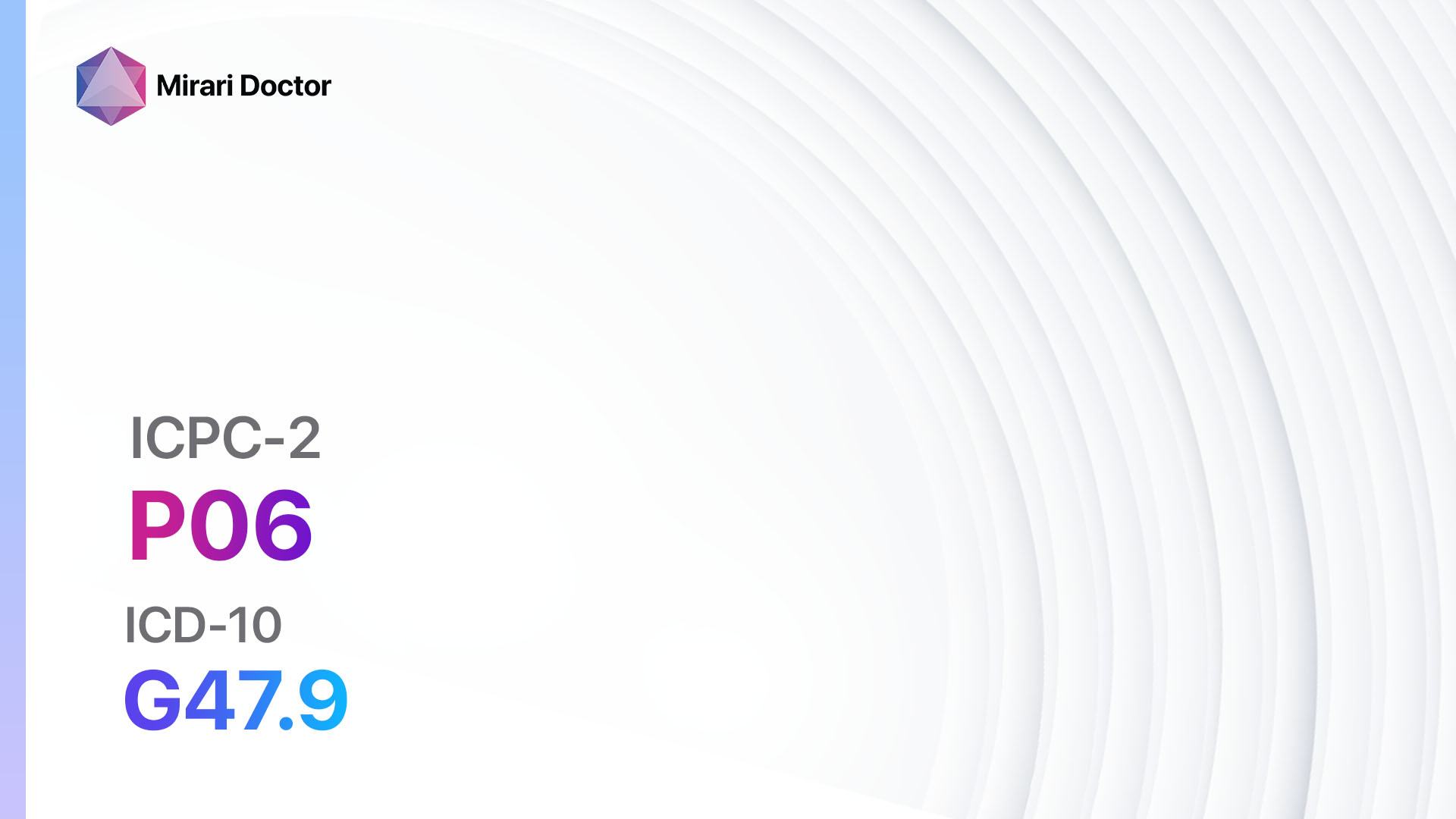
Introduction
Sleep disturbance refers to any disruption in the normal sleep pattern, including difficulty falling asleep, staying asleep, or experiencing poor quality sleep. It is a common condition that can significantly impact an individual’s overall well-being and daily functioning[1]. The aim of this guide is to provide healthcare professionals with a comprehensive approach to diagnosing and managing sleep disturbance.
Codes
Symptoms
- Difficulty falling asleep
- Waking up frequently during the night
- Excessive daytime sleepiness
- Feeling tired or unrested upon waking
- Difficulty concentrating or focusing
- Irritability or mood changes
- Increased accidents or errors
- Loud snoring or gasping for air during sleep[2]
Causes
- Stress and anxiety
- Poor sleep hygiene
- Medical conditions (e.g., sleep apnea, restless leg syndrome)
- Medications (e.g., stimulants, antidepressants)
- Substance abuse (e.g., alcohol, caffeine)
- Environmental factors (e.g., noise, temperature)[3]
Diagnostic Steps
Medical History
- Obtain a detailed medical history, including information about the patient’s sleep patterns, duration of sleep disturbance, and any associated symptoms.
- Inquire about any underlying medical conditions, such as sleep apnea, restless leg syndrome, or psychiatric disorders.
- Assess the patient’s sleep hygiene practices, including bedtime routine, use of electronic devices before sleep, and caffeine or alcohol consumption.
- Evaluate the patient’s stress levels and any recent life events that may be contributing to sleep disturbance[4].
Physical Examination
- Perform a thorough physical examination, focusing on signs or findings that may indicate an underlying medical condition contributing to sleep disturbance.
- Assess the patient’s body mass index (BMI) to screen for obesity, which is a risk factor for sleep apnea.
- Check for signs of nasal congestion or obstruction that may suggest nasal allergies or sinusitis.
- Evaluate the patient’s mental status and mood to screen for psychiatric disorders[5].
Laboratory Tests
- Polysomnography: A sleep study that measures brain activity, eye movements, heart rate, and oxygen levels during sleep. It is the gold standard for diagnosing sleep disorders such as sleep apnea[6].
- Multiple Sleep Latency Test (MSLT): Measures the time it takes for a person to fall asleep during the day. It is used to diagnose conditions such as narcolepsy[7].
- Blood tests: May be ordered to evaluate for underlying medical conditions, such as thyroid disorders or anemia, that may contribute to sleep disturbance.
- Urine drug screen: To assess for substance abuse that may be causing or exacerbating sleep disturbance.
Diagnostic Imaging
- Imaging studies are not typically used in the diagnosis of sleep disturbance. However, in certain cases, a CT scan or MRI of the brain may be ordered to evaluate for structural abnormalities or tumors that may be causing sleep disturbance[8].
Other Tests
- Epworth Sleepiness Scale: A questionnaire used to assess the severity of daytime sleepiness[9].
- Berlin Questionnaire: A screening tool used to identify individuals at high risk for sleep apnea.
- Actigraphy: A non-invasive method of monitoring sleep-wake patterns using a wristwatch-like device that measures movement and light exposure[10].
Follow-up and Patient Education
- Schedule a follow-up appointment to review the results of any diagnostic tests and discuss treatment options.
- Provide patient education on sleep hygiene practices, stress management techniques, and the importance of maintaining a consistent sleep schedule.
- Encourage the patient to keep a sleep diary to track their sleep patterns and identify any triggers or patterns associated with sleep disturbance.
Possible Interventions
Traditional Interventions
Medications:
Top 5 drugs for Sleep Disturbance:
- Melatonin:
- Cost: $5-$20/month.
- Contraindications: Hypersensitivity to melatonin.
- Side effects: Headache, dizziness, nausea.
- Severe side effects: None reported.
- Drug interactions: None reported.
- Warning: May cause drowsiness, avoid driving or operating machinery.
- Benzodiazepines (e.g., Temazepam, Diazepam):
- Cost: Generic versions can be $10-$30/month.
- Contraindications: History of substance abuse, respiratory depression.
- Side effects: Drowsiness, confusion, dizziness.
- Severe side effects: Respiratory depression, dependence.
- Drug interactions: Alcohol, opioids.
- Warning: May cause drowsiness, avoid driving or operating machinery.
- Non-Benzodiazepine Hypnotics (e.g., Zolpidem, Eszopiclone):
- Cost: Generic versions can be $10-$30/month.
- Contraindications: History of substance abuse, respiratory depression.
- Side effects: Drowsiness, dizziness, headache.
- Severe side effects: Sleep-related behaviors (e.g., sleepwalking), dependence.
- Drug interactions: Alcohol, opioids.
- Warning: May cause drowsiness, avoid driving or operating machinery.
- Antidepressants (e.g., Trazodone, Amitriptyline):
- Cost: Generic versions can be $10-$30/month.
- Contraindications: Hypersensitivity to the medication, recent myocardial infarction.
- Side effects: Drowsiness, dry mouth, constipation.
- Severe side effects: Cardiac arrhythmias, serotonin syndrome.
- Drug interactions: MAO inhibitors, serotonergic medications.
- Warning: May cause drowsiness, avoid driving or operating machinery.
- Antihistamines (e.g., Diphenhydramine, Doxylamine):
- Cost: Generic versions can be $5-$15/month.
- Contraindications: Hypersensitivity to the medication, narrow-angle glaucoma.
- Side effects: Drowsiness, dry mouth, blurred vision.
- Severe side effects: None reported.
- Drug interactions: Alcohol, other sedating medications.
- Warning: May cause drowsiness, avoid driving or operating machinery.
Alternative Drugs:
- Valerian Root: Herbal supplement that may help promote sleep. Cost: $5-$15/month.
- Lavender Essential Oil: Aromatherapy option that may help induce relaxation and improve sleep. Cost: $10-$20/bottle.
- Passionflower: Herbal supplement that may help reduce anxiety and improve sleep. Cost: $5-$15/month.
- Chamomile Tea: Herbal tea that may help promote relaxation and improve sleep. Cost: $5-$10/box.
Surgical Procedures:
- Surgical procedures are not typically indicated for the treatment of sleep disturbance.
Alternative Interventions
- Cognitive Behavioral Therapy for Insomnia (CBT-I): A structured therapy that helps individuals identify and change behaviors and thoughts that contribute to sleep disturbance. Cost: $100-$200/session.
- Acupuncture: May help improve sleep quality and reduce insomnia symptoms. Cost: $60-$120 per session.
- Yoga and Meditation: Practices that promote relaxation and stress reduction, which can improve sleep. Cost: Varies depending on the location and instructor.
- Exercise: Regular physical activity can help improve sleep quality. Cost: Varies depending on the type of exercise (e.g., gym membership, fitness classes).
- Relaxation Techniques (e.g., deep breathing, progressive muscle relaxation): Can help induce relaxation and improve sleep. Cost: Free.
Lifestyle Interventions
- Maintain a consistent sleep schedule, going to bed and waking up at the same time every day.
- Create a relaxing bedtime routine, such as taking a warm bath or reading a book.
- Create a sleep-friendly environment, including a comfortable mattress and pillows, and a cool, dark, and quiet room.
- Limit exposure to electronic devices before bedtime, as the blue light can interfere with sleep.
- Avoid caffeine and alcohol close to bedtime, as they can disrupt sleep.
- Manage stress through techniques such as mindfulness, journaling, or talking to a therapist.
It is important to note that the cost ranges provided are approximate and may vary depending on the location and availability of the interventions.
Mirari Cold Plasma Alternative Intervention
Understanding Mirari Cold Plasma
- Safe and Non-Invasive Treatment: Mirari Cold Plasma is a safe and non-invasive treatment option for various skin conditions. It does not require incisions, minimizing the risk of scarring, bleeding, or tissue damage.
- Efficient Extraction of Foreign Bodies: Mirari Cold Plasma facilitates the removal of foreign bodies from the skin by degrading and dissociating organic matter, allowing easier access and extraction.
- Pain Reduction and Comfort: Mirari Cold Plasma has a local analgesic effect, providing pain relief during the treatment, making it more comfortable for the patient.
- Reduced Risk of Infection: Mirari Cold Plasma has antimicrobial properties, effectively killing bacteria and reducing the risk of infection.
- Accelerated Healing and Minimal Scarring: Mirari Cold Plasma stimulates wound healing and tissue regeneration, reducing healing time and minimizing the formation of scars.
Mirari Cold Plasma Prescription
Video instructions for using Mirari Cold Plasma Device – P06 Sleep disturbance (ICD-10:G47.9)
| Mild | Moderate | Severe |
| Mode setting: 2 (Wound Healing) Location: 7 (Neuro system & ENT) Morning: 15 minutes, Evening: 15 minutes | Mode setting: 2 (Wound Healing) Location: 7 (Neuro system & ENT) Morning: 30 minutes, Lunch: 30 minutes, Evening: 30 minutes | Mode setting: 2 (Wound Healing) Location: 7 (Neuro system & ENT) Morning: 30 minutes, Lunch: 30 minutes, Evening: 30 minutes |
| Mode setting: 8 (Insomnia) Location: 7 (Neuro system & ENT) Morning: 15 minutes, Evening: 15 minutes | Mode setting: 8 (Insomnia) Location: 7 (Neuro system & ENT) Morning: 30 minutes, Lunch: 30 minutes, Evening: 30 minutes | Mode setting: 8 (Insomnia) Location: 7 (Neuro system & ENT) Morning: 30 minutes, Lunch: 30 minutes, Evening: 30 minutes |
| Mode setting: 7 (Immunotherapy) Location: 1 (Sacrum) Morning: 15 minutes, Evening: 15 minutes | Mode setting: 7 (Immunotherapy) Location: 1 (Sacrum) Morning: 30 minutes, Lunch: 30 minutes, Evening: 30 minutes | Mode setting: 7 (Immunotherapy) Location: 1 (Sacrum) Morning: 30 minutes, Lunch: 30 minutes, Evening: 30 minutes |
| Total Morning: 45 minutes approx. $7.50 USD, Evening: 45 minutes approx. $7.50 USD | Total Morning: 90 minutes approx. $15 USD, Lunch: 90 minutes approx. $15 USD, Evening: 90 minutes approx. $15 USD | Total Morning: 90 minutes approx. $15 USD, Lunch: 90 minutes approx. $15 USD, Evening: 90 minutes approx. $15 USD |
| Usual treatment for 7-60 days approx. $105USD – $900 USD | Usual treatment for 6-8 weeks approx. $1,890USD – $2,520 USD | Usual treatment for 3-6 months approx. $4,050 USD – $8,100 USD |
 |
|
Use the Mirari Cold Plasma device to treat Sleep disturbance effectively.
WARNING: MIRARI COLD PLASMA IS DESIGNED FOR THE HUMAN BODY WITHOUT ANY ARTIFICIAL OR THIRD PARTY PRODUCTS. USE OF OTHER PRODUCTS IN COMBINATION WITH MIRARI COLD PLASMA MAY CAUSE UNPREDICTABLE EFFECTS, HARM OR INJURY. PLEASE CONSULT A MEDICAL PROFESSIONAL BEFORE COMBINING ANY OTHER PRODUCTS WITH USE OF MIRARI.
Step 1: Cleanse the Skin
- Start by cleaning the affected area of the skin with a gentle cleanser or mild soap and water. Gently pat the area dry with a clean towel.
Step 2: Prepare the Mirari Cold Plasma device
- Ensure that the Mirari Cold Plasma device is fully charged or has fresh batteries as per the manufacturer’s instructions. Make sure the device is clean and in good working condition.
- Switch on the Mirari device using the power button or by following the specific instructions provided with the device.
- Some Mirari devices may have adjustable settings for intensity or treatment duration. Follow the manufacturer’s instructions to select the appropriate settings based on your needs and the recommended guidelines.
Step 3: Apply the Device
- Place the Mirari device in direct contact with the affected area of the skin. Gently glide or hold the device over the skin surface, ensuring even coverage of the area experiencing.
- Slowly move the Mirari device in a circular motion or follow a specific pattern as indicated in the user manual. This helps ensure thorough treatment coverage.
Step 4: Monitor and Assess:
- Keep track of your progress and evaluate the effectiveness of the Mirari device in managing your Sleep disturbance. If you have any concerns or notice any adverse reactions, consult with your health care professional.
Note
This guide is for informational purposes only and should not replace the advice of a medical professional. Always consult with your healthcare provider or a qualified medical professional for personal advice, diagnosis, or treatment. Do not solely rely on the information presented here for decisions about your health. Use of this information is at your own risk. The authors of this guide, nor any associated entities or platforms, are not responsible for any potential adverse effects or outcomes based on the content.
Mirari Cold Plasma System Disclaimer
- Purpose: The Mirari Cold Plasma System is a Class 2 medical device designed for use by trained healthcare professionals. It is registered for use in Thailand and Vietnam. It is not intended for use outside of these locations.
- Informational Use: The content and information provided with the device are for educational and informational purposes only. They are not a substitute for professional medical advice or care.
- Variable Outcomes: While the device is approved for specific uses, individual outcomes can differ. We do not assert or guarantee specific medical outcomes.
- Consultation: Prior to utilizing the device or making decisions based on its content, it is essential to consult with a Certified Mirari Tele-Therapist and your medical healthcare provider regarding specific protocols.
- Liability: By using this device, users are acknowledging and accepting all potential risks. Neither the manufacturer nor the distributor will be held accountable for any adverse reactions, injuries, or damages stemming from its use.
- Geographical Availability: This device has received approval for designated purposes by the Thai and Vietnam FDA. As of now, outside of Thailand and Vietnam, the Mirari Cold Plasma System is not available for purchase or use.
References
- Ohayon, M. M. (2011). Epidemiological Overview of sleep Disorders in the General Population. Sleep Medicine Research, 2(1), 1-9.
- American Academy of Sleep Medicine. (2014). International Classification of Sleep Disorders (3rd ed.).
- Buysse, D. J. (2013). Insomnia. JAMA, 309(7), 706-716.
- Morin, C. M., & Benca, R. (2012). Chronic insomnia. The Lancet, 379(9821), 1129-1141.
- Sateia, M. J. (2014). International Classification of Sleep Disorders-Third Edition. Chest, 146(5), 1387-1394.
- Kushida, C. A., et al. (2005). Practice Parameters for the Indications for Polysomnography and Related Procedures: An Update for 2005. Sleep, 28(4), 499-521.
- Littner, M. R., et al. (2005). Practice Parameters for Clinical Use of the Multiple Sleep Latency Test and the Maintenance of Wakefulness Test. Sleep, 28(1), 113-121.
- Silber, M. H., et al. (2021). The Visual Scoring of Sleep in Adults. Journal of Clinical Sleep Medicine, 17(2), 187-204.
- Johns, M. W. (1991). A New Method for Measuring Daytime Sleepiness: The Epworth Sleepiness Scale. Sleep, 14(6), 540-545.
- Ancoli-Israel, S., et al. (2003). The Role of Actigraphy in the Study of Sleep and Circadian Rhythms. Sleep, 26(3), 342-392.
Related articles
Made in USA


